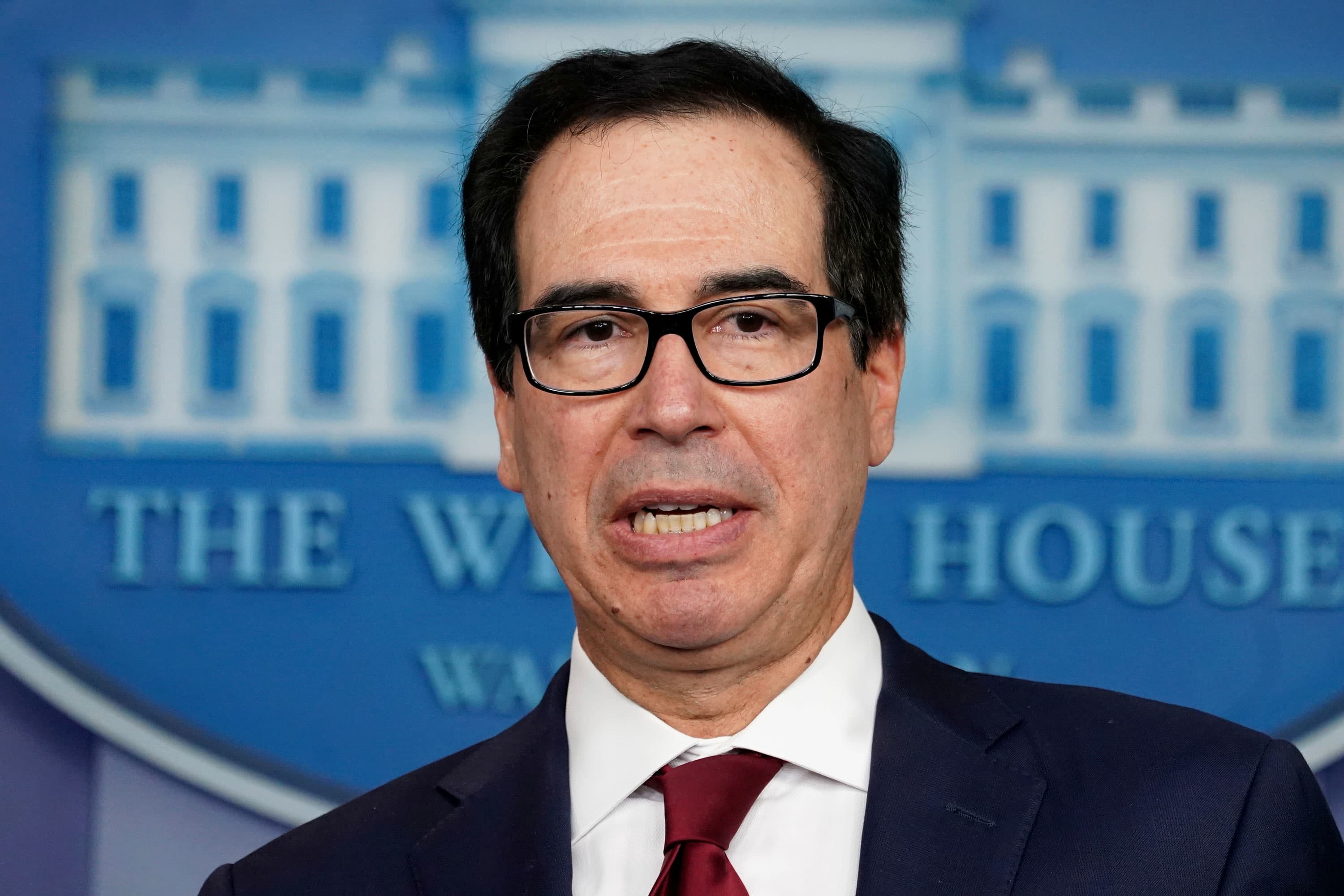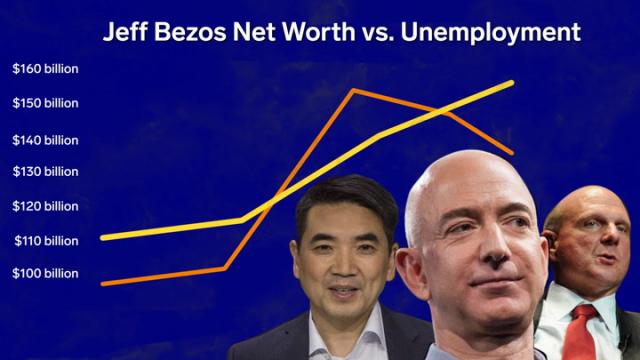NBC News
When he leaves office, can ex-President Trump be trusted with America’s national security secrets?

It was part of a long tradition of former presidents being consulted about, and granted access to, some of the nation’s secrets.
Priess and other former intelligence officials say Joe Biden would be wise not to let that tradition continue in the case of Donald Trump.
They argue soon-to-be-former President Trump already poses a danger because of the secrets he currently possesses, and they say it would be foolish to trust him with more sensitive information. With Trump’s real estate empire under financial pressure and his brand suffering, they worry he will see American secrets as a profit center.
“This is not something that one could have ever imagined with other presidents, but it’s easy to imagine with this one,” said Jack Goldsmith, who worked as a senior Justice Department official in the George W. Bush administration.
“He’s shown as president that he doesn’t take secret-keeping terribly seriously,” Goldsmith said in an interview. “He has a known tendency to disrespect rules related to national security. And he has a known tendency to like to sell things that are valuable to him.”
Goldsmith and other experts noted that Trump has a history of carelessly revealing classified information. He told the Russian foreign minister and ambassador in 2017 about extremely sensitive terrorism threat information the U.S. had received from an ally. Last year he tweeted what experts said was a secret satellite photo of an Iranian nuclear installation.

The president also may be vulnerable to foreign influence. His tax records, as reported by the New York Times, reveal that Trump appears to face financial challenges, having personally guaranteed more than $400 million of his companies’ debt at a time when the pandemic has put pressure on the hotel industry, in which Trump is a major player.
“Is that a risk?” said Priess, who wrote “The President’s Book of Secrets,” about presidents and intelligence. “If it were someone applying for a security clearance, damn right it would be a risk.”
The White House did not respond to requests for comment. The Biden transition declined to comment.
Trump has said his finances are sound, and that the debts are a small percentage of his assets. Generally, though, large debts to foreign banks — Trump’s biggest creditor is reported to be Deutsche Bank, a German institution with links to Russia — would exclude a person from a top secret clearance.
Presidents, however, are not investigated and polygraphed for security clearances as all other government officials are. By virtue of being elected, they assume control over all the nation’s secret intelligence, and are allowed by law to disclose any of it, at any time, to anyone.
Former presidents aren’t subject to security clearance investigations, either. They are provided access to secrets as a courtesy, with the permission of the current president.
Typically, former presidents are given briefings before they travel overseas, or in connection with an issue about which the current president wishes to consult them, Priess and other experts say.
When President Bill Clinton sent former president Jimmy Carter to diffuse a tense stand off in Haiti, for example, Carter likely received classified briefings on the situation ahead of his trip.
And when George H.W. Bush visited his son in the White House, he sat in on on the President’s Daily Brief, the highly classified compendium of secrets that is presented each morning to the occupant of the Oval Office, according to Priess, who interviewed both men for his book.
It’s unclear whether former President Barack Obama has received intelligence briefings after he left office, but President Trump said in March that he hasn’t consulted his predecessors about coronavirus or anything else.
Former presidents have long made money after leaving office by writing books and giving speeches, but no former president has ever had the kind of international business entanglements Trump does. Trump has business interests or connections in China, Russia and other U.S. adversary countries that covet even tiny portions of what he knows about the American national security state.
That said, Trump probably is not conversant with many highly classified details, experts say, He was famous for paying only intermittent attention during his intelligence briefings and declining to read his written materials. Moreover, intelligence officials tend not to share specifics about sources and methods with any president, unless he asks.
So Trump probably doesn’t know the names of the CIA’s spies in Russia, experts say. But presumably he knows a bit about the capabilities of American surveillance drones, for example, or how adept the National Security Agency has been at intercepting the communications of various foreign governments.
Like so much with Trump, his track record of sharing secrets has been unprecedented in American presidential history.
In interviews with the journalist Bob Woodward for a book released this fall, Trump boasted about a secret nuclear weapons system that neither Russia nor China knew about.
According to the Washington Post, Woodward’s sources “later confirmed that the U.S. military had a secret new weapons system, but they would not provide details, and that the people were surprised Trump had disclosed it.”
When Trump briefed the public about the commando raid that killed ISIS leader Abu Bakr al Baghdadi, he disclosed classified and sensitive details, according to reporting by NBC News.
In 2017, Trump gave the location of two American nuclear submarines near North Korea to the president of the Philippines.
That same year, a member of his golf club at Mar-a-Lago took a photo of a briefing Trump and the Japanese prime minister were receiving in a public area about North Korea, and posted it on Facebook.

In 2018, the New York Times reported that Trump commonly used insecure cell phones to call friends, and that Chinese and other spies listened in, gaining valuable insights.
Doug Wise, a former CIA officer and Trump critic, argued this week in a piece on the Just Security web site that Trump has long posed a national security danger, and that affording him access to secrets after he leaves the White House would compound that danger.
Trump’s large debts, he wrote, present “obvious and alarming counterintelligence risks” to the United States.
Russian President Vladimir Putin, for one, would have a great incentive to pay Trump to act on Russia’s behalf, Wise wrote.
“Assuming President Joe Biden follows custom, Trump would continue to have access to sensitive information that the Russians would consider valuable,” he wrote. “As horrifying as it would seem, could a financially leveraged former president be pressured or blackmailed into providing Moscow sensitive information in exchange for financial relief and future Russian business considerations?”
It was not impossible to envision Trump paid millions on retainer by Gulf Arab states or other foreign governments, Harvard professor Goldsmith said, “in the course of which he starts blabbing and disclosing lots of secrets. It wouldn’t be an express quid pro quo, but people would pay for access to and time with him, knowing that he will not be discreet.”
Former CIA Director John Brennan, a frequent Trump critic who was denied access to his own classified file by the president, said the Biden administration should carefully weigh the question of Trump’s access to future secrets.
“The new administration would be well-advised to conduct an immediate review to determine whether Donald Trump should have continued access to classified information in light of his past actions and deep concern about what he might do in the future,” he said.
Then again, it may never become an issue, said former CIA officer Marc Polymeropoulos, who pointed out that Trump has long displayed “disdain” for American intelligence agencies.
“I would frankly be surprised if he even wanted these briefings,” Polymeropoulos said.





 Two Minnesota regulators granted environmental permits for Enbridge’s Line 3 oil pipeline across northern Minnesota, critical approvals needed for construction to begin soon on the controversial $2.6 billion project, on Thursday, Nov. 12, 2020. (Richard Tsong-Taatarii/Minneapolis Star Tribune/TNS) ORG XMIT: 1826898.
Two Minnesota regulators granted environmental permits for Enbridge’s Line 3 oil pipeline across northern Minnesota, critical approvals needed for construction to begin soon on the controversial $2.6 billion project, on Thursday, Nov. 12, 2020. (Richard Tsong-Taatarii/Minneapolis Star Tribune/TNS) ORG XMIT: 1826898.










